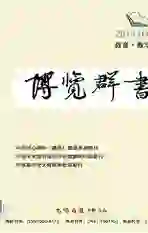浅析西奥多·罗特克的《苏醒》
2014-05-26孟金艳
Abstract:Written by Theodore Roethke, The Waking is a villanelle. The theme is to illustrate that people should be related to the nature of the world and appreciate life. Based on the whole poem, there are four rhetorical devices appeared, including alliteration, repetition, metaphor and paradox.
Key words:Alliteration; repetition; metaphor; paradox
摘 要:《蘇醒》是西奥多·罗特克的一首带有自我反省的维拉内拉诗。其主题是倡导人们要接近自然以及欣赏生活。全诗中,作者采用了头韵、重复、隐喻和悖论等修辞手法。
关键词:头韵;重复;隐喻;悖论
1. Introduction
The Waking is a poem written by Theodore Roethke in 1953. It is a self-reflexive poem that describes waking up from sleep. The two key lines of the poem, “I wake to sleep, and take my waking slow” and “I learn by going where I have to go.” illustrate that people should be related to the nature of the world and appreciate life. Based on the whole poem, there are four rhetorical devices appeared, including alliteration, repetition, metaphor and paradox.
2. General information
Roethkes The Waking is a villanelle, a form of five tercets and a quatrain. Each stanza contains three lines (called a tercet), except in the last stanza where there are four lines (called a quatrain). The rhyme scheme initiated by the author is ABA ABA CDA CDA CDA ABAA, specifically, ABA in the first two stanzas, CDA in the third through fifth stanzas, and ABAA in the final stanza. This particular rhyme scheme creates a comfortable flow of overt rhyming. By reading the poem, the themes of relating to the nature of the world and appreciating life are represented clearly.
3. Four rhetorical devices appeared in the poem
3.1 Alliteration
In the first stanza, there are alliterations of “wake . . . waking” and “sleep . . . slow” coupled with the interior rhyming of “wake . . . take . . . waking” in the first line. The same harmonies rhythm in “feel . . . fate . . . fear . . ., going . . . go . . . and what . . . where” appear in the second and third lines. In Roethkes lines, people can hear soul clap its hands with the initial consonant patterning and repeated medial vowel sounds and the eight iterations of the pronoun “I”.
3.2 Repetition
“Repetition is the soul of poetry.” In the whole poem, the repetitive rhyme appears at the end of each line, such as “slow . . .go . . .know”, “fear . . .ear . . .near”, “there . . .stair . . .air”, along with the inconsistent rhyme “you . . .how . . .do”. These ordinarily ominous words do make sense, which makes people understand that fate is something not to be feared. In addition to the repetitive 4 “l”s of “light . . . lowly . . . lively . . . lovely”, creating a consciousness lovely as the sleep from which it has slowly emerged.
3.3 Metaphor
The title is a metaphor within itself. It is similar with a Pun, namely, one aspect refers to the waking from sleeping in reality and the waking from a chaotic life in the other. The second line from the second stanza, “I hear my being dance from ear to ear”, also shows the metaphor, which refers to the struggling to figure out what is life. In the third stanza, the ground is not simply an object but the life force, where the dead body dissolves, nourishes new life, and continues the cycle.
In addition to the fourth stanza, light refers to the goodness in life, the tree stands for the living things, the lowly worm refers to the humble people in life and a winding stair represents the long and rough life road that we encounter. Whats more, Sleep is often refers to as the “little death”.
3.4 Paradox
There are a series of paradoxes in The Waking. In lines of the poem “I wake to sleep, and take my waking slow.” and “I learn by going where I have to go.” “Sleeping” and “waking”, which seem opposite, are like the shaking that paradoxically keeps the speaker steady. “Waking to sleep” and “learning by going where you have to go” are both paradoxes. The effect of a circular form and a circular content adds to the mystical nature of the poem. The circle is the ultimate mystery of life.
In the first stanza, the line “I feel my fate in what I cannot fear,” is also a paradox. The second stanza rejects the intellect as the road to enlightenment. To “think by feeling” is another paradox. Thinking is an activity through mental process, while feeling is achieved through our sense organs. The last paradox in the poem is about life and death. It is as vibrant and fragile and mysterious as the circle of life, “birth and decay” and “life and death”.
4. Conclusion
Based on the whole poem, Theodore Roethke adopts four rhetorical devices, namely, alliteration, repetition, metaphor and paradox to illustrate the theme of the poem relates to the nature of the world and appreciating life. Especially in modern times, its urgent for people to relax the fickle mood by learning from yesterday, living for today and hoping for tomorrow, so as to enrich themselves properly and persistently.
Bibliography
[1]景曉莺,王丹斌.英语诗歌常识与名作研读[M].上海交通大学出版社,2011.
[2]许渊冲.中诗英韵探胜[M].北京大学出版社,2010.
作者简介: 孟金艳(1987—), 女, 陕西延安人, 西北大学外国语学院硕士研究生,研究方向:中西文化对比。
